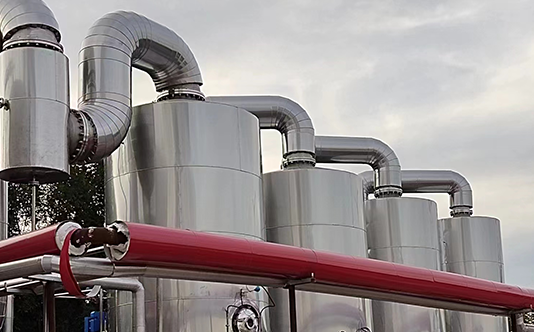Multiple-effect evaporation (MEE) is an energy-saving process compared to single-effect evaporation. While a single-effect evaporator has only one effective evaporation chamber, multiple-effect evaporators have multiple chambers. The key difference lies in the utilization of steam: in a single-effect evaporator, the steam is directly condensed, whereas in multiple-effect evaporators, the secondary steam from the preceding effect is reused to save energy. Multiple-effect evaporation is a primary means of energy conservation, and generally, the more effects, the better the steam economy. Typically, three-effect and four-effect evaporators are common. Multiple-effect evaporators can be categorized based on their form, such as tubular and plate types, and based on evaporation methods, such as falling-film evaporation, rising-film evaporation, as well as concurrent flow and countercurrent flow configurations.



The most significant characteristic of multi-effect evaporators is their energy efficiency. By fully utilizing the energy of secondary steam, the energy consumption of multi-effect evaporators is more than 30% lower than that of single-effect evaporators.

Multi-effect evaporators have a relatively compact structure and occupy a small footprint. Due to their design with multiple evaporators connected in series, the equipment has a smaller volume, allowing it to better coordinate with other equipment in the production process and improve production efficiency.

Each part of the multi-effect evaporator has independent control devices to ensure stable operation of the equipment. Additionally, the high degree of automation of the equipment reduces errors caused by manual operation.
Rich experience in process planning and equipment manufacturing
Customized Process Solutions
The project scope ranges from experimental testing of material parameters, to determination of process plans, to drawing, procurement, manufacturing, installation, debugging, training, and ultimately equipment delivery

Career
Professional
build Brilliant
Future
Proficient in industry/Achieving the future
